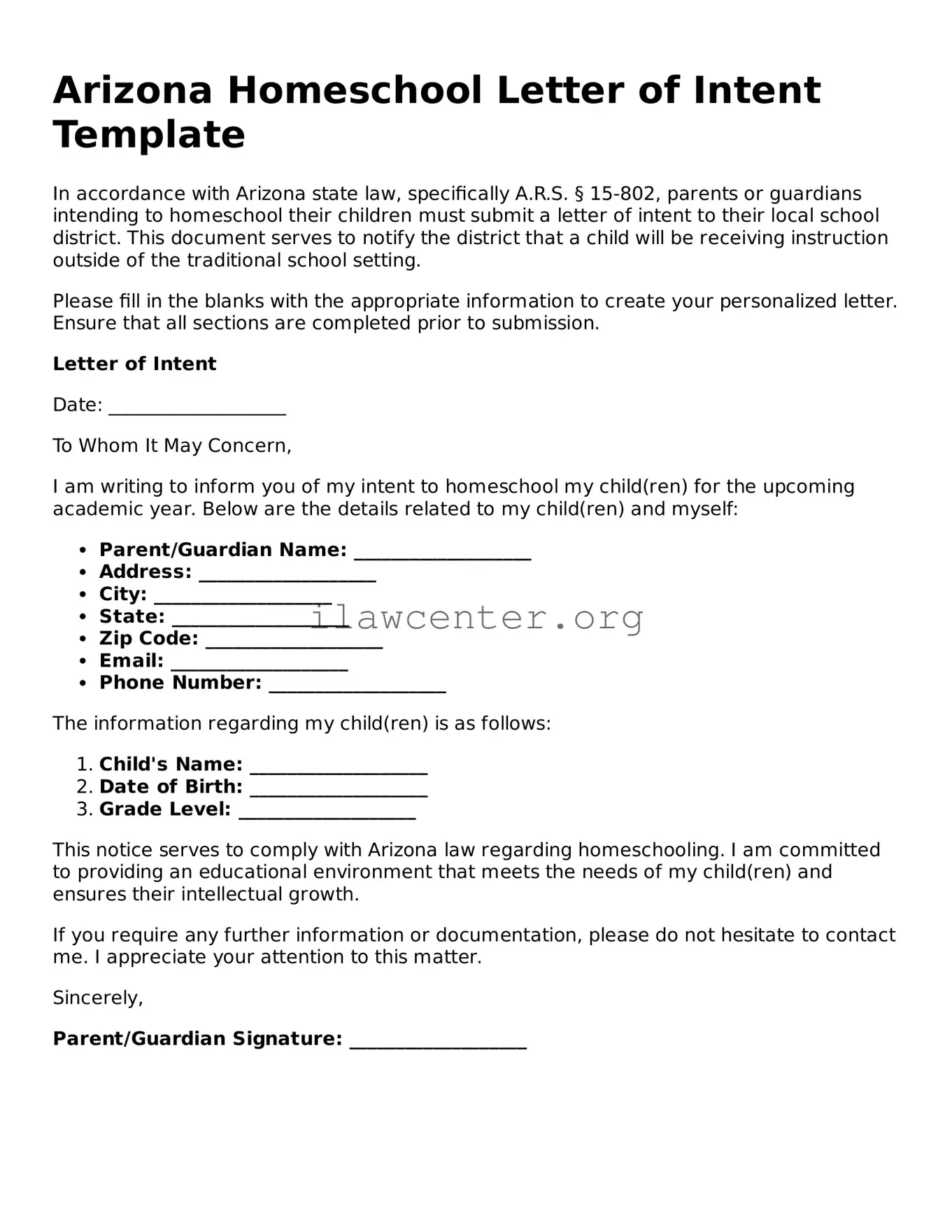What is the Arizona Homeschool Letter of Intent?
The Arizona Homeschool Letter of Intent is a form that parents or guardians must submit to formally declare their intention to educate their children at home. This document notifies the local school district about the choice to homeschool, which is an important step in complying with Arizona's homeschooling laws.
Who needs to fill out the Letter of Intent?
Any parent or guardian who wants to homeschool their child in Arizona must fill out the Letter of Intent. If you have children aged six to sixteen, you need to submit this form to ensure that you meet the state’s educational requirements. It is essential to provide this notice, especially if your child has previously attended public or private school.
When should I submit the Letter of Intent?
You should submit the Letter of Intent prior to starting your homeschooling journey. Most parents choose to send it at the beginning of each school year, but you can also submit it at other times, like when withdrawing a child from a traditional school. It is advisable to keep a copy for your records once submitted.
Where do I send the Letter of Intent?
The completed Letter of Intent should be mailed or delivered to the school district where your child resides. Each district may have its own requirements, so be sure to check if they prefer electronic submission or a specific mailing address.
What information is required on the Letter of Intent?
The Letter of Intent generally requires basic information about the child, including their name, age, and address. It will also ask for your name and relationship to the child. You may need to state your intent to homeschool and give the general plan of education you intend to follow.
Is there a deadline for submitting the Letter of Intent?
While there is no strict deadline imposed for submitting the Letter of Intent, it’s recommended to send it as early as possible, preferably at the start of the school year. This ensures that you are in compliance with state regulations and provides adequate notice to the school district.
What happens after I submit the Letter of Intent?
After submitting the Letter of Intent, the school district will acknowledge its receipt, although you may not receive a formal response. Once your intent to homeschool is on file, you can begin your educational program without further administrative action from the district. Be sure to maintain your own records and keep track of your child's educational progress.
Do I need to renew the Letter of Intent each year?
You do not need to renew the Letter of Intent each year. Once submitted, as long as you continue to educate your child at home and comply with Arizona homeschooling laws, the letter remains valid. However, if your child changes residence or you cease to homeschool, you will need to notify the school district of these changes.
What if I have more questions about homeschooling in Arizona?
If you have more questions about the homeschooling process, resources, or legal requirements in Arizona, several organizations provide information and support for homeschooling families. Local homeschooling groups, state education boards, and legal aid organizations can offer valuable resources to help guide you through your homeschooling experience.
